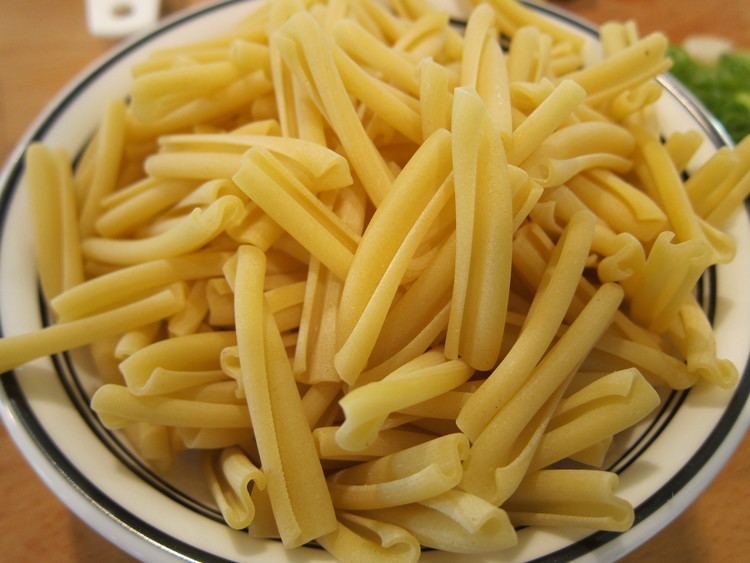Type Pasta Typical pasta cooking time 10-12 minutes | Place of origin Italy Pronunciation stroh-tzuh-PRAY-tee | |
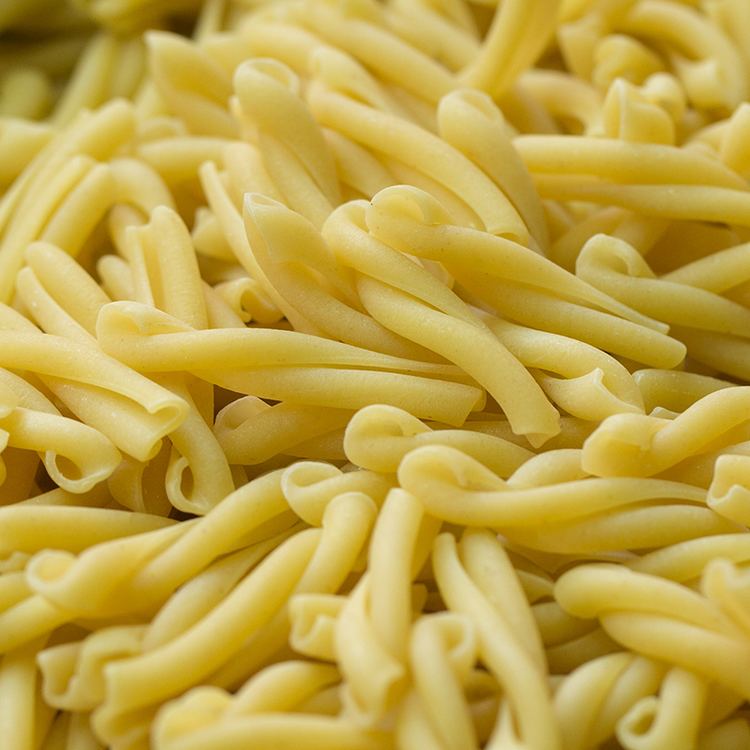 | ||
Literal meaning Priest-chokers, Priest-stranglers Characteristic Short length, approximately 1 1/8 inch, rolled across their width, resembles a rolled towel. Dish ideas Strozzapreti with pancetta, Strozzapreti with tomato and hard ricotta, Strozzapreti with king prawns and boiled ham Similar Trofie, Orecchiette, Cavatelli, Taglierini, Garganelli | ||
Italian strozzapreti pasta original recipe
Strozzapreti ([ˌstrɔttsaˈprɛːti]; "priest-choker" or "priest-strangler" in Italian) are an elongated form of cavatelli, or hand-rolled pasta typical of the Emilia-Romagna, Tuscany, Marche and Umbria regions of Italy as well as in the state of San Marino. The name is also used for a baked cheese and vegetable dumpling, prepared in some regions of Italy and in the French island of Corsica.
Contents
- Italian strozzapreti pasta original recipe
- How to make strozzapreti pasta wmv
- Origin of name
- Pasta description
- Corsican Strozzapreti
- References
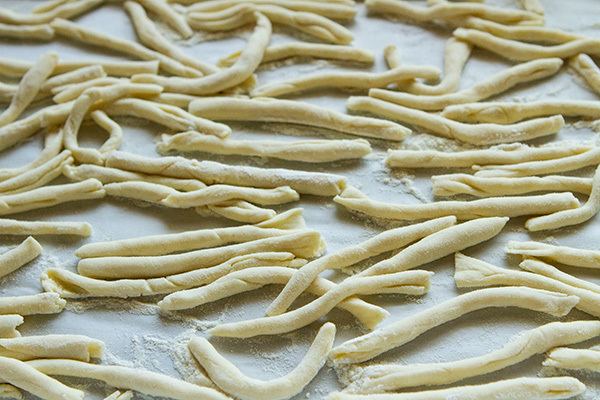
How to make strozzapreti pasta wmv
Origin of name
There are several legends to explain the name.
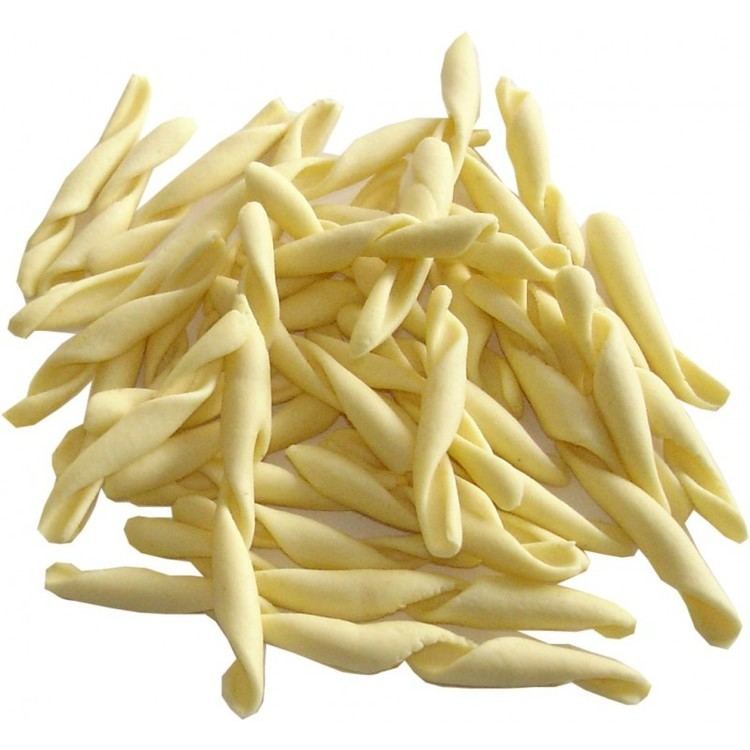
One is that gluttonous priests were so enthralled by the savory pasta that they ate too quickly and choked themselves, sometimes to death. Another explanation involves the "azdora" ("housewife" in the Romagna's dialect), who "chokes" the dough strips to make the strozzapreti: "... in that particular moment you would presume that the azdora would express such a rage (perhaps triggered by the misery and difficulties of her life) to be able to strangle a priest!" Another legend goes that wives would customarily make the pasta for churchmen as partial payment for land rents (In Romagna, the Catholic Church had extensive land properties rented to farmers), and their husbands would be angered enough by the venal priests eating their wives' food to wish the priests would choke as they stuffed their mouths with it. The name surely reflects the diffuse anticlericalism of the people of Romagna and Tuscany.
Another possible explanation is that the pasta resembles a clerical collar, commonly referred to as a "Priest Choker".
Pasta description
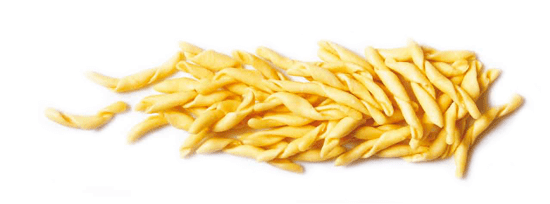
The dough (see some regional variations below) is rolled out in thick flat sheets. It is then cut into strips. The strips are lightly rolled or twisted between the palms. The large pasta is separated into 10 cm pieces by pinching. Unlike spaghetti or macaroni, this pasta is not uniform in size or shape.
The dough traditionally used for strozzapreti in Romagna is made with wheat flour, water, salt, and (optionally) eggs.
In Emilia the dough is made from flour, water, Parmesan cheese, and egg whites, all beaten together.
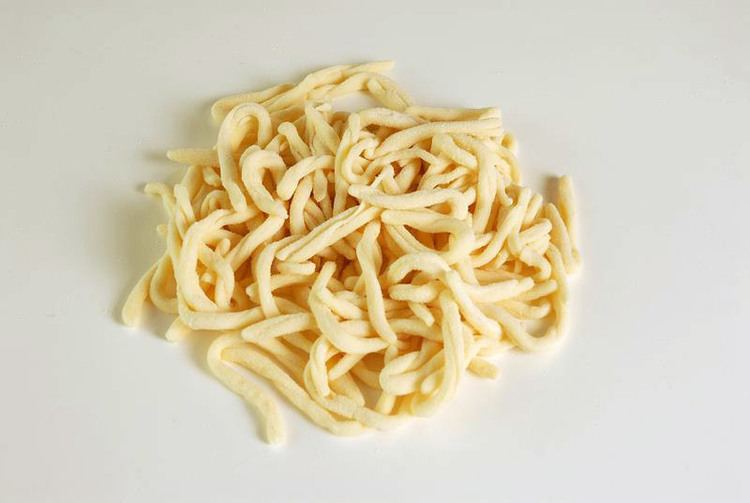
Pici is a somewhat similar form of pasta from Tuscany in which hand-rolled, solid fat tubes of dough are cut but left untwisted; the taut, rope-like appearance provides yet another popular explanation for the association with strangling.
Corsican Strozzapreti
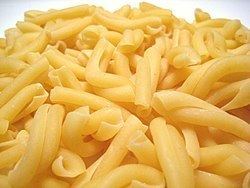
Strozzapreti (Corsican: sturzapreti) refers also to large gnocchi made of cheese and vegetables, and then baked, typical of Corsica. Seasoned spinach or chard is rolled into balls together with brocciu cheese, and then baked in oven. These balls are large enough to choke a person if eaten whole.
